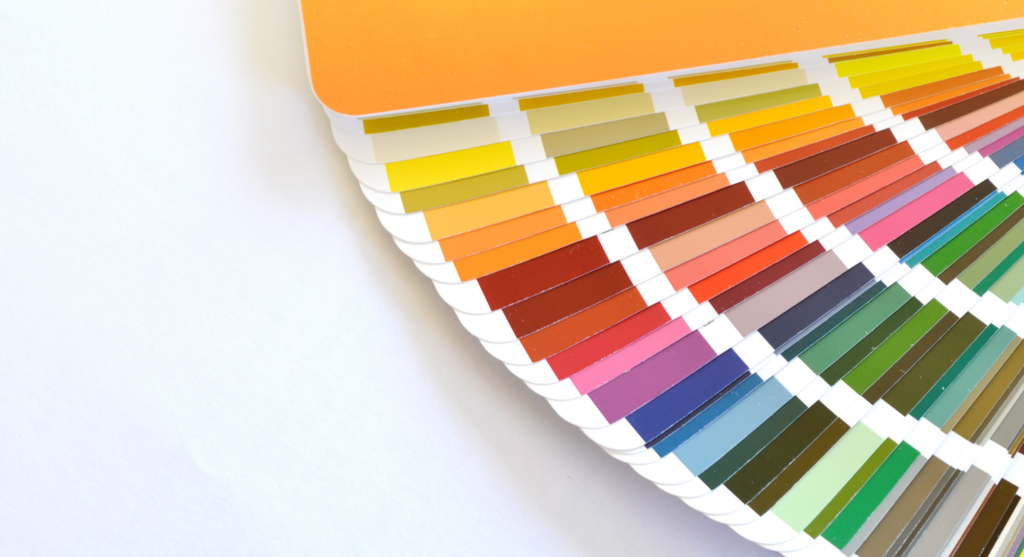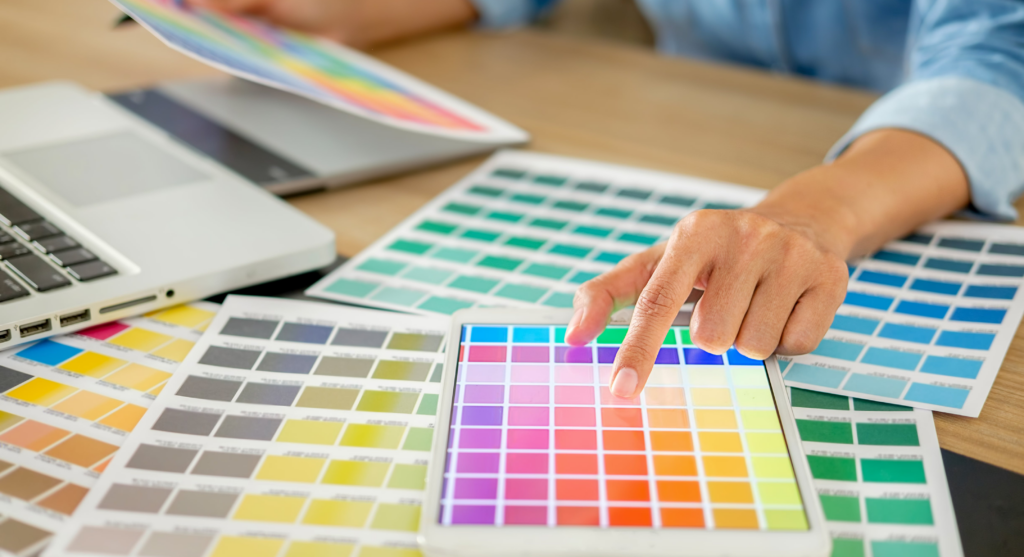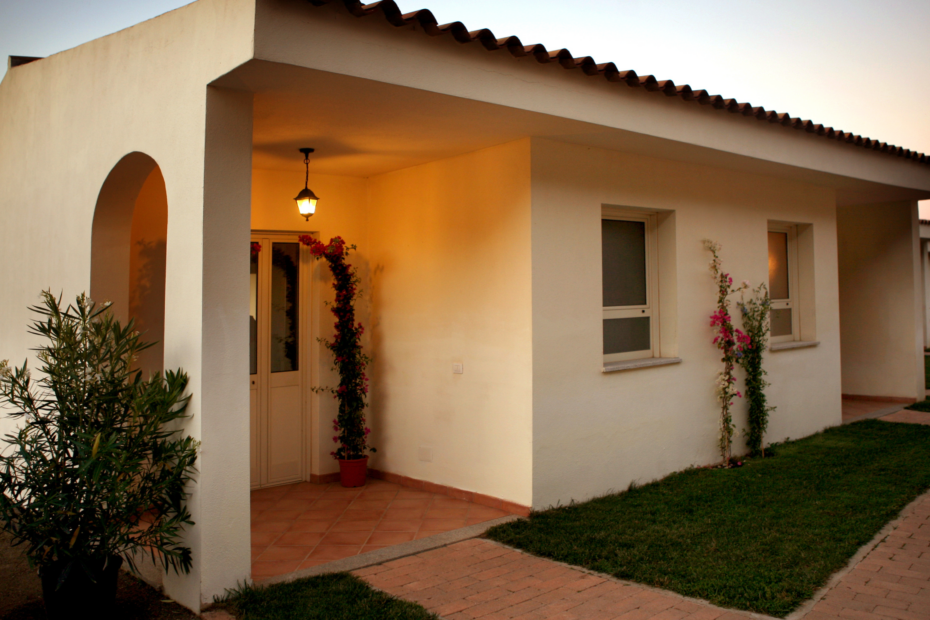O design de interiores vai muito além de simplesmente escolher móveis e acessórios. A verdadeira arte está em harmonizar cores e texturas para criar um ambiente acolhedor, equilibrado e visualmente cativante. Quando esses elementos são combinados cuidadosamente, o espaço resultante não é apenas elegante e moderno, mas também profundamente funcional e reflexivo de sua personalidade. Neste guia abrangente, exploraremos técnicas para equilibrar cores e texturas, nos aprofundaremos na psicologia por trás das escolhas de cores e forneceremos exemplos práticos e tendências para ajudar você a transformar sua casa ou escritório em um refúgio sofisticado.
Introduction
Every detail in interior design contributes to the overall atmosphere of a room. The way colors interact with textures can define a space’s mood and functionality. Whether you’re revamping a residential setting or designing a commercial space, understanding how to create harmony among these elements is essential. This guide has been structured to offer an in-depth look at the subject, blending theory with practical advice. We’ll discuss how the psychology of colors affects perception, outline strategies for selecting the perfect color palette, and explain why textures are as crucial as hues in creating an inviting interior.
Além disso, os insights fornecidos aqui são projetados não apenas para inspirar você, mas também para atender aos rigorosos requisitos de monetização do Google AdSense e aos padrões de SEO do Yoast. O conteúdo é criado para ser informativo, envolvente e estruturado de uma forma que aprimore a legibilidade e o desempenho do mecanismo de busca.
The Importance of Harmony in Interior Decoration
Why Harmonize Colors and Textures?
Harmonizing colors and textures is much more than an aesthetic choice; it’s a fundamental aspect of creating an environment that feels balanced and intentional. A well-designed space can:
- Create a Sense of Equilibrium: A thoughtful blend of colors and textures generates an atmosphere that is both calming and inviting.
- Enhance Cohesion: When various elements of design work together, the room appears unified, making it easier to integrate different pieces of furniture and decor.
- Reflect Personal Style: A harmonious design not only pleases the eye but also mirrors the personality and lifestyle of its inhabitants, making the space uniquely yours.
O design de interiores bem-sucedido envolve uma interação delicada entre esses componentes. Quer você prefira cores fortes com texturas contrastantes ou prefira um visual sutil e monocromático, encontrar o equilíbrio certo é a chave para criar espaços que sejam práticos e visualmente deslumbrantes.

The Psychology of Colors in Interior Design
How Colors Influence Mood and Space
Colors are powerful psychological tools that can evoke a wide range of emotions and perceptions. Understanding the psychological impact of different hues helps you create spaces that promote the desired atmosphere. Here are some primary colors and their typical effects:
- Blue: Known for its calming and serene qualities, blue is an excellent choice for bedrooms and living rooms. It can help lower stress and foster a sense of tranquility.
- Green: Evoking the freshness of nature, green brings balance and rejuvenation to any space. It’s perfect for creating an environment that feels both lively and soothing.
- Yellow: Associated with energy and creativity, yellow is a stimulating color that can boost productivity. It works well in kitchens, offices, and creative spaces.
- Gray: A symbol of sophistication and neutrality, gray serves as an excellent backdrop that complements a wide range of design styles.
- White: Often used to create a sense of openness and light, white can make small spaces feel larger and more inviting.
- Red: A vibrant and energetic color, red can add warmth and passion to social spaces when used sparingly.
- Pink: Conjuring images of softness and delicacy, pink is ideal for bedrooms and relaxation areas, where a gentle, soothing atmosphere is desired.
The Role of Lighting
É importante notar que a aparência das cores pode mudar significativamente sob diferentes condições de iluminação. A luz natural, assim como fontes artificiais, podem alterar a vibração e o tom de uma cor. Antes de se comprometer com uma paleta específica, sempre teste as cores escolhidas no espaço sob várias condições de iluminação. Esta etapa simples garante que seu design final permaneça coeso e fiel à sua visão, independentemente da hora do dia.
Choosing the Ideal Color Palette
Basic Guidelines for Color Selection
One of the most popular techniques in interior design is the 60-30-10 rule. This method helps you distribute colors in a way that maintains balance and visual interest:
- 60% Dominant Color: Usually a neutral or soft base that creates the foundation of the space.
- 30% Secondary Color: This supports the primary color and adds depth without overwhelming the room.
- 10% Accent Color: Bright or contrasting colors used sparingly to highlight key elements and infuse personality.
Utilizing the Color Wheel
The color wheel is an invaluable tool when it comes to planning your color scheme. It allows you to experiment with different combinations, such as:
- Complementary Colors: These are opposite each other on the wheel and provide a vibrant contrast, making the design pop.
- Analogous Colors: Located next to each other, these hues create a more natural, harmonious flow.
- Monochromatic Tones: Variations of the same color can deliver an elegant, understated look, particularly suited to modern interiors.

Digital Tools for Visualizing Combinations
Antes de finalizar suas decisões de cores, considere usar ferramentas digitais como Coolors ou Adobe Color. Essas plataformas permitem que você experimente várias combinações e visualize como elas ficarão no seu espaço. Além disso, testar pequenas amostras em suas paredes ou por meio de amostras de tecido pode evitar erros dispendiosos e garantir que suas cores escolhidas funcionem bem com a iluminação natural do ambiente.
A Importância das Texturas na Decoração de Interiores
Why Textures Matter
Textures play a crucial role in adding depth and character to a room. While colors set the mood, textures bring a tactile quality that enriches the overall design. A careful mix of smooth, rough, shiny, and matte finishes can transform a flat, uninspired room into a dynamic, inviting space. Here’s why incorporating varied textures is essential:
- Visual Layers: Mixing different textures creates visual layers, which make the space more interesting and dynamic.
- Tactile Appeal: Elements like soft cushions, plush rugs, or rough-hewn wood invite touch, contributing to the sensory experience of the room.
- Highlighting Features: Strategic use of textured elements can draw attention to focal points, such as a statement wall or a unique piece of furniture.
Examples of Textures in Decoration
Consider the following materials and their typical applications in interior design:
- Wood: Natural wood adds warmth and a sense of organic beauty. Use it in flooring, furniture, or accent walls to create a cozy atmosphere.
- Fabrics: Materials like velvet, linen, and cotton come with distinct textures that are perfect for upholstery, curtains, and throw pillows.
- Metals: Incorporating metal finishes in decorative accents or furniture lends a modern and industrial edge to the space.
- Stone and Ceramic: These materials, used in countertops, flooring, or wall tiles, can introduce a rustic or contemporary feel, depending on the finish.
- Glass and Plastics: When combined with other textures, glass and plastic elements can add a sleek, modern touch and enhance the play of light within the room.
Exemplos práticos e tendências atuais em design de interiores
Integrating Colors and Textures in Modern Spaces
Successful interior design projects often employ a neutral base complemented by strategic pops of color and a variety of textures. Consider the following scenarios:
- Contemporary Living Room: Imagine a living room with a soft gray feature wall, paired with a leather sofa and plush, blue accent pillows. Metallic elements, like a silver coffee table or decorative lamp, introduce an additional layer of modern sophistication.
- Modern Kitchen: In kitchens, natural stone countertops and white cabinetry can be enhanced by wooden accents and colorful kitchen accessories. This blend not only creates a vibrant cooking space but also an area that feels welcoming and efficient.
- Cozy Bedroom: A bedroom designed for relaxation might feature pastel walls, soft bedding, and decorative touches in wood or bamboo. The interplay of these elements creates an oasis of calm that is perfect for unwinding after a long day.
Trending Design Styles Emphasizing Harmony
In recent years, several trends have emerged that underscore the importance of harmonizing colors and textures:
- Warm Minimalism: This style combines the clean lines of minimalism with warm, natural textures that make a space feel inviting without sacrificing simplicity.
- Eco-Friendly Design: A growing trend in interior design is the use of sustainable, natural materials. Reclaimed wood, organic fabrics, and recycled metals not only contribute to a greener planet but also add a unique character to each room.
- Eclectic Mix: Combining elements from different styles—classic and modern, bold and understated—allows for personalized spaces that feel curated rather than cookie-cutter. Neutral bases paired with striking accents help create a balanced yet dynamic look.
Dicas e recomendações para criar um ambiente equilibrado
Planning and Research
Before diving into any design project, thorough planning is essential. Researching the latest trends, exploring design magazines and websites, and even visiting showrooms can provide valuable insights into what works best for your space. This preparatory phase helps ensure that the final design is both aesthetically pleasing and practical.
Maintaining Balance
Achieving balance in design means avoiding overuse of any one element:
- Moderate the Use of Bold Colors: While bright colors can energize a space, too much intensity may overwhelm the senses. Use accent colors sparingly to maintain balance.
- Mix Textures Thoughtfully: Combining various textures should be done with care. Avoid letting one material dominate the scene. Instead, aim for a harmonious mix that creates contrast without chaos.
- Leverage Neutral Backdrops: Neutrals such as white, gray, and beige provide a versatile base that allows other colors and textures to stand out. These shades are excellent for creating a cohesive and flexible design framework.
Digital and Physical Tools
Utilize both digital resources and physical samples to finalize your design choices. Software tools that simulate room layouts and color schemes can help you visualize the outcome, while real-world samples ensure that the textures and hues behave as expected in your specific environment.
Adapting to Lighting and Space
Cada cômodo é único. Um espaço com luz natural limitada pode se beneficiar de tons mais claros e texturas reflexivas para iluminar a área, enquanto um cômodo com bastante luz solar pode lidar com tons mais fortes e profundos. Sempre teste como as cores e texturas escolhidas interagem com as condições de iluminação do cômodo ao longo do dia.
Conclusion
Combining colors and textures in interior design is an art that goes beyond aesthetics—it’s about creating spaces that resonate with personality, functionality, and a sense of balance. By understanding the psychology behind color choices, using rules like the 60-30-10 distribution, and carefully integrating varied textures, you can transform any room into a sophisticated and inviting space.
Every design decision, from the selection of a primary color to the choice of a textured accent, contributes to the overall harmony of the environment. With careful planning, testing, and a willingness to experiment, you can achieve a look that not only pleases the eye but also stands up to the practical demands of everyday life.

